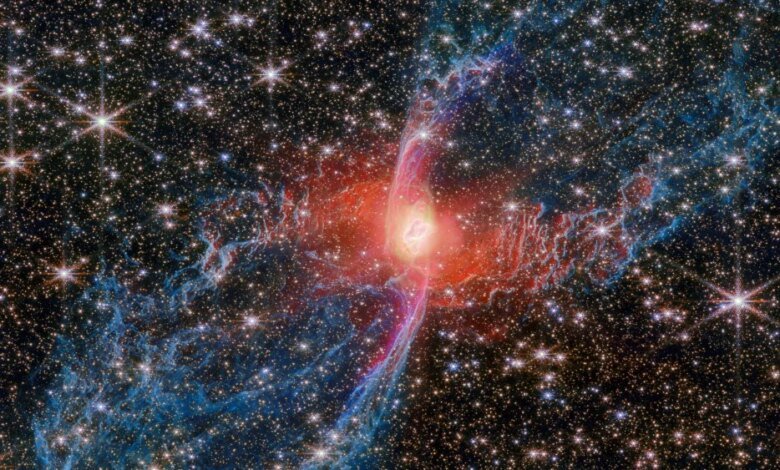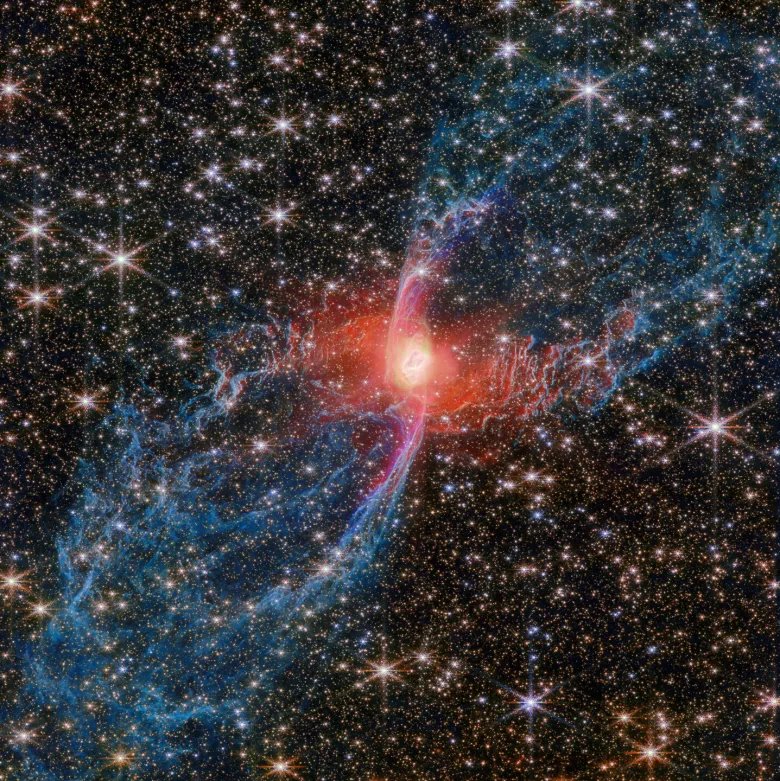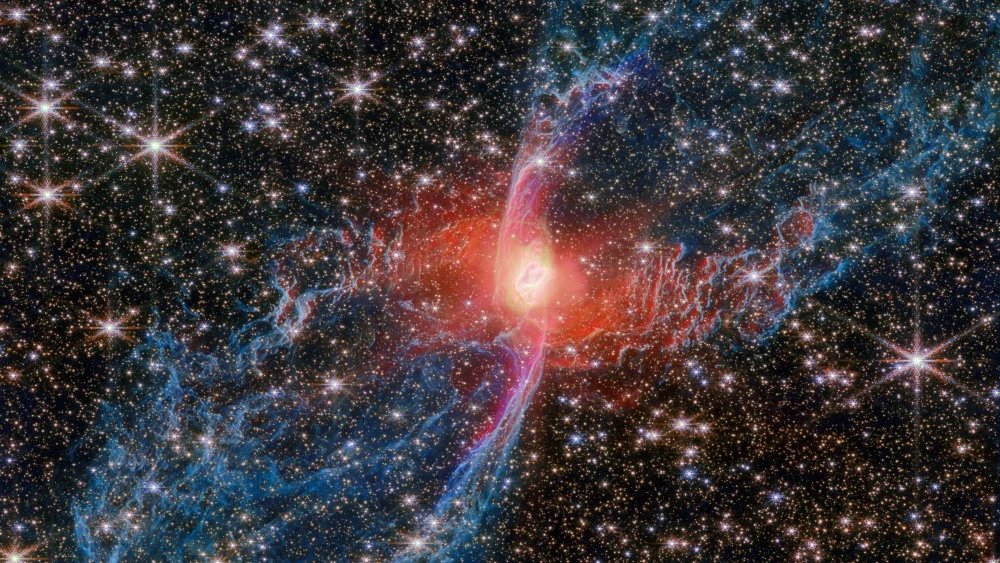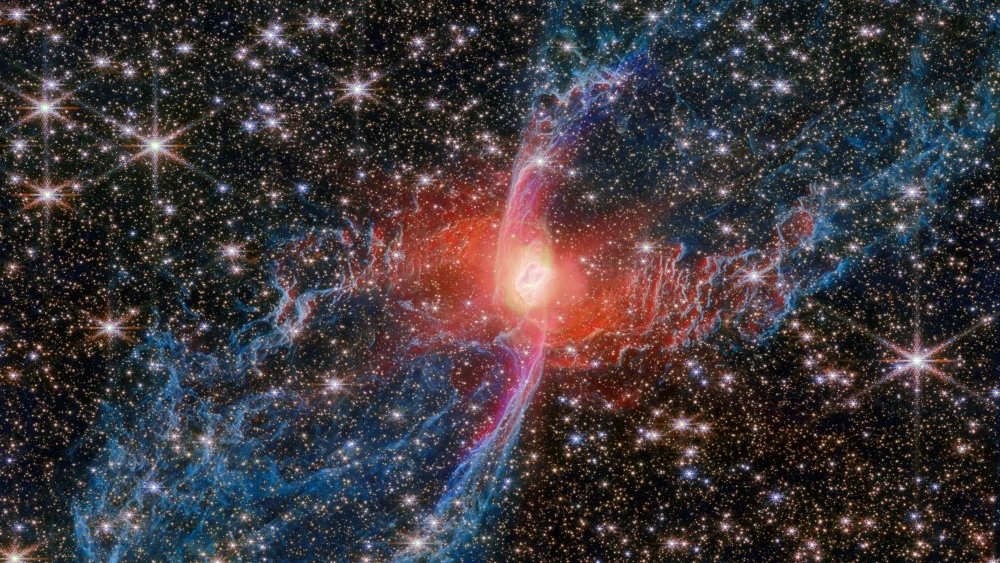The James Webb Telescope Took A Fantastic Photo Of The Red Spider Nebula

The James Webb Telescope Took A Fantastic Photo Of The Red Spider Nebula


uaetodaynews.com — The James Webb Telescope took a fantastic photo of the Red Spider Nebula
New image from the space telescope. James Webb shared EKAshows the nebula NGC 6537, which is called the Red Spider. Using its near-infrared camera (NIRCam), Webb revealed previously unseen details of this planetary nebula against a backdrop of thousands of stars.
Planetary nebulae, such as the Red Spider, form when stars like the Sun complete their life cycle. The star expands, turning into a red giant, shedding its outer shells into space and exposing its hot core. The ultraviolet radiation from the star ionizes the ejected gas (neutral particles turn into charged ones) – it begins to glow. The planetary nebula phase is short-lived and lasts only tens of thousands of years.
The image shows the central star, glowing slightly brighter than the thin filaments of dusty gas around it. NIRCam revealed an unexpectedly hot and bright central star, a major discovery.
фото: Esa/Webb, & CSA, JH Castner (Rocester Institute of Technology)
In optical images, such as those from the Hubble Telescope, the star appears dim and bluish. But in Webb’s infrared footage it appears red because the camera is sensitive to thermal radiation. This shows the presence of warm dust surrounding the central star. This dust probably revolves around the star in the form of a disk.
Although only one star is visible at the nebula’s center, scientists have not ruled out the presence of a hidden companion. A second stellar object could explain the nebula’s characteristic shape: a narrow “waist” and wide, hourglass-like blades. A similar shape is observed in other planetary nebulae, such as the Butterfly Nebula.
Webb showed for the first time the full length of the elongated structures of the nebula – the “legs” of the spider. Colored blue in the photo, they emit molecular hydrogen (H2). Each of these closed bubble structures extends for about three light years. Over thousands of years, these huge bubbles were inflated by gas flowing from the center.
Webb also recorded active gas jets escaping from the center of the nebula. The elongated purple “S”-shaped structure around the nebula’s heart corresponds to emission from ionized iron atoms. These are traces of a fast jet that escaped from the vicinity of the central star and collided with previously ejected material, forming a rippling structure.
The observations provide a more holistic view of the dynamics and composition of the Red Spider. Infrared astronomy allows you to peer through dust and see hidden processes that are invisible in the optical range.
Subscribe and read “Science” in
Telegram
Disclaimer: This news article has been republished exactly as it appeared on its original source, without any modification.
We do not take any responsibility for its content, which remains solely the responsibility of the original publisher.
Author:
Published on: 2025-10-29 20:30:00
Source: naukatv.ru
Disclaimer: This news article has been republished exactly as it appeared on its original source, without any modification. We do not take any responsibility for its content, which remains solely the responsibility of the original publisher.
Author: uaetodaynews
Published on: 2025-10-30 05:34:00
Source: uaetodaynews.com





